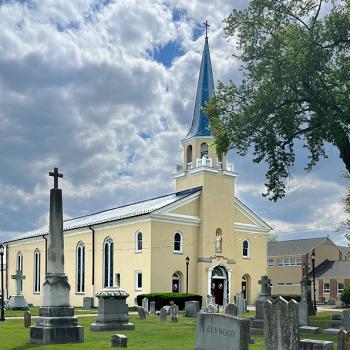
The megachurch infection may lead to the eventual death of Christian connection, also known as the church.
Let me explain.
In 2014/2015, I did a series of “Mystery Worships” where I visited a different church each week and wrote a newspaper column about it.
After noting a “meh” response to one church we attended, I thought I’d better analyze what happened. In truth, the worship itself was quite well done.
A varying team accompanied me on those visits. Age range: pre-teen to the geriatric, all with different religious backgrounds. We enjoy a meal after each service, share impressions, and consider the next worship adventure.
Our overall assessment about this particular day? An unenthusiastic, “Well, it was fine but . . . ”
What was our hesitation? Two reasons I suspect.
One, we were visiting and knew no one. No sense of local community gave us a foundation of sharing space with a loving community. As friendly as people can be–and this was a particularly friendly place–nothing replaces the depth of genuine and in-depth knowledge of one another.
Two, and the more pernicious issue, we reached a point where we wanted to be wowed by worship. We wanted something unusual, something snappy, something profoundly moving, something spectacularly life-changing.
In other words, we became worship snobs, sniffing our collective noses at anything that didn’t quite meet our increasingly exact standards.
We insisted on a weekly experience of Pentecost, but not the hard work of the Ordinary Season that follows it. We want the “high” without having to grow deep roots or expend ourselves to produce fruit that nurtures the world.
We became infected with consumerist and passive Christianity
In a small scale, my mystery worship team exemplified the worst of consumer Christianity. We wanted to skip to the mountaintops and ignore the trained guides and their work on getting us there and the personal discipline necessary to make the journeys.
Almost all of the fastest growing churches I have visited aim for the spectacular in worship. The gatherings feature loud music, light shows, lots of visuals, and big-name preachers, many of whom are former pro athletes.
The worshiper tends to have a passive experience at the feet of the experts. Literally “at the feet” because the stages are set up high, ensuring good sight lines in the massive, stadium-like spaces.
Teams furnish the children’s areas with lavish audio/visual equipment, ensuring little boredom and preparing them well for the passive experience of adult worship.
The imperative of congregational participation in worship has been lost
This past Sunday, in the small, local church, was full of congregational participation. The particularly excellent acoustics in their space meant that the attendees could hear one another well.
The collective worship responses gave a healthy sense of being in a large community of like-minded people. As a result, the congregational singing was far more robust than I’ve seen just about anywhere else.
But megachurch auditoriums manage the stage and sound (the idea of a chancel has completely disappeared) for professional bands with expensive amplification, not for the unamplified human voice. Few attendees sing, mainly because they sense they are singing alone, an uncomfortable sensation for most. In the massive spaces, we cannot hear the unamplified voices of those in worship with us.
Almost none of those types of worship services expect any unison reading or responses. All comes from the front.
Small groups help but the infection may be too deep to cure
I know that megachurches work hard to create connective small groups and these become the lifeblood of a healthy large church. Nonetheless, these expensive and expansive Sunday “productions” have contributed to the rapidly growing breakdown of people worshiping and working together in community.
Few worshippers have a holistic church experience–it has become increasingly fragmented from daily life and much more like a weekly Superbowl half-time performance, quickly criticized if it doesn’t meet individual standards.
As I consider the future of my own denomination, The United Methodist Church, I’m aware of the push and need to create more megachurches. Among other things, such entities pay much larger apportionments, thus help keep the bureaucracy functioning, the Bishops and their minions paid and the pensions funded. These are our financial realities.
But I think megachurches are essentially, and certainly unintentionally, killing the essence of the Christian community. At its core, we must have deep intimate connection with others to live out Incarnational Christianity. Together we intentionally speak the truth in love to one another, offer comfort and support, bear one another’s burdens, and together manifest the transforming presence of Christ to the world.
Unquestionably much admirable mission emanates from larger churches and their extensive resources. I never want to ignore the good they have brought.
I simply voice my concern that the kind of vulnerable connection that we need for healthy personal growth to Christian maturity becomes increasingly difficult as the size of the church grows and worship becomes a professional performance rather than the work of the people.

















